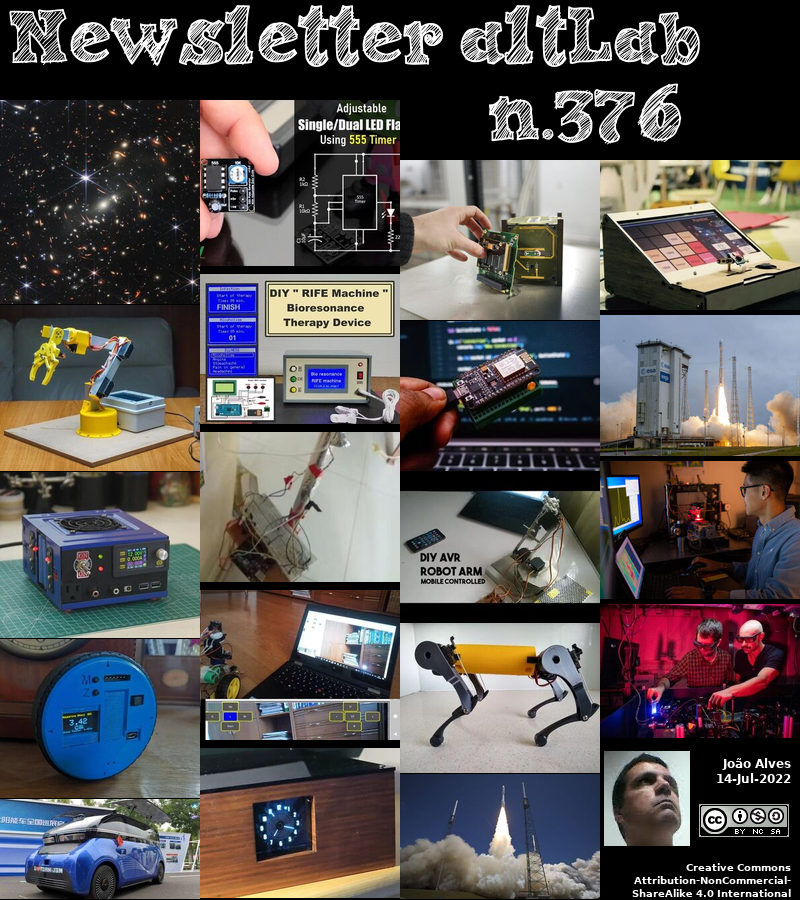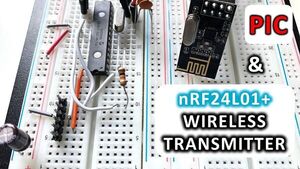2022-07-14 - Nº 376
Editorial
Esta é a Newsletter Nº 376 que se apresenta com o mesmo formato que as anteriores. Se gostar da Newsletter partilhe-a!
Todas as Newsletters encontram-se indexadas no link.
Esta Newsletter tem os seguintes tópicos:
Faz hoje anos que nascia, em 1793, o matemático inglês George Green. Ele foi o primeiro a desenvolver uma teoria matemática da electricidade e do magnetismo. Surpreendentemente, seguiu o ofício de padeiro e moleiro do seu pai. Não só foi autodidacta como matemático, mas em Mar 1828 publicou em privado algumas dezenas de exemplares de uma obra sofisticada, An Essay on the Application of Mathematical Analysis to the Theories of Electricity and Magnetism. No início, chamou pouca atenção, mas aos 40 anos de idade foi estudar em Cambridge (Out 1833). Eventualmente o seu Ensaio tornou-se conhecido de Lord Kelvin (William Thomson) que o compreendeu e o construiu, bem como de James Clerk Maxwell. De origens obscuras, Green tinha iniciado as modernas teorias matemáticas da electricidade.
Faz também hoje anos que nascia, em 1800, o químico francês Jean-Baptiste Dumas. Ele foi um pioneiro na química orgânica. Propugnando novas teorias de relações entre compostos orgânicos, lançou as bases para o trabalho posterior de Kekulé. Em 1823, trabalhando com Jean-Louis Prévost, Dumas mostrou que a ureia é transportada pelo sangue. Juntos em 1824-25, repetiram as experiências de filtração de Lazarro Spallanzani, confirmando assim a necessidade de espermatozóides para fertilização, e descreveram a clivagem num óvulo de rã. Em 1833, com a determinação de nitrogénio em compostos orgânicos, ele estabeleceu análises orgânicas quantitativas. Duas décadas antes de Mendeléev, em 1851, ele procurou estabelecer uma ordem entre os elementos pelas suas propriedades. Em 1848 passou à política, tornando-se Mestre da Casa da Moeda em 1868.
Faz igualmente hoje anos que nascia, em 1842, o engenheiro químico norte-americano Charles Benjamin Dudley. Ele foi um dos primeiros apoiantes da normalização e dos ensaios de materiais na indústria. A partir de 1875, como químico da Companhia Ferroviária da Pensilvânia, pesquisou a metalurgia dos carris de aço porque a sua ruptura era um sério risco nessa altura. Quando descobriu uma enorme variação na qualidade do aço e publicou os seus resultados (1878), os fabricantes não cooperaram no início. Contudo, Dudley insistiu na continuação dos testes, e em normas rigorosas para combustíveis, lubrificantes, tintas, dispositivos de iluminação e várias peças mecânicas de locomotivas e material circulante. Ele co-fundou (1898) a Sociedade Americana de Testes e Materiais, e foi seu presidente desde 1902 até à sua morte.
Faz também hoje anos que nascia, em 1857, o industrial norte-americano Frederick L. Maytag. Ele, em conjunto com outros três homens em 1893 iniciou um negócio de implementos agrícolas em Newton, Iowa. Fizeram malhadeiras, cortadores de bandas e acessórios de auto-alimentação inventados por um dos fundadores, George Parsons. Em 1902, a empresa era o maior fabricante mundial de alimentadores de máquinas debulhadoras. Contudo, a empresa passou mais tarde para a produção de máquinas de lavar, devido à natureza sazonal da indústria agrícola. A sua primeira máquina de lavar foi a cuba de madeira Parson's Pastime alimentada manualmente (1907-08). Em 1909, a Maytag tomou a seu cargo a sua própria indústria, a Maytag Company para manter o seu controlo de qualidade no planeamento e produção de máquinas de lavar. Faz igualmente hoje anos que nascia, em 1918, o engenheiro electrotécnico norte-americano Jay W. Forrester. Ele supervisionou a construção do computador Whirlwind no Massachusetts Institute of Technology, para o qual inventou a memória de núcleo magnético de acesso aleatório, o dispositivo de armazenamento de informação utilizado na maioria dos computadores digitais. Estudou também a aplicação de computadores a problemas de gestão, desenvolvendo métodos de simulação informática.
Faz também hoje anos que nascia, em 1921, o químico inglês Geoffrey Wilkinson. Ele partilhou (com Ernst Fischer) o Prémio Nobel da Química em 1973 por "pelo seu trabalho pioneiro, realizado independentemente, sobre a química do organometálico, os chamados compostos sanduíche".
Por fim, faz hoje anos que nascia, em 1969, o engenheiro electrotécnico e inventor mexicano Jose Hernandez-Rebollar. Ele concebeu a AcceleGlove (2003), um dispositivo semelhante a uma luva que traduz a linguagem gestual em palavras escritas para indivíduos surdos. Obteve o seu mestrado no México, onde esteve envolvido na construção de sistemas de controlo de antenas para o que viria a ser o maior telescópio do mundo. Depois prosseguiu o seu doutoramento, especializado em Sinais e Sistemas, com uma bolsa de estudos Fulbright na Universidade de Georgetown nos Estados Unidos. Lá, em três anos, ele realizou o seu desejo de longa data de criar uma forma de os surdos traduzirem a linguagem gestual em texto e som por meios electrónicos. A AcceleGlove utiliza sensores de acelerómetro para traduzir a linguagem gestual dos movimentos da mão de um utilizador em sinais lidos por um computador micro-controlador no braço do utilizador. Em 2009, o dispositivo tinha a capacidade de traduzir 300 letras do alfabeto e palavras da linguagem gestual americana (ASL) em palavras e sentenças faladas, em inglês ou espanhol.
Em 1850, a primeira demonstração pública de gelo feita por refrigeração nos EUA teve lugar durante um jantar na Mansion House, Apalachicola, o Dr. John Gorrie produziu blocos de gelo do tamanho de tijolos. Ele instalou o seu sistema no Hospital Marinho dos EUA em Apalachicola. Obteve a primeira patente de congelador mecânico em 6 de Maio de 1851, para uma "melhoria no processo de produção artificial de gelo".
Em 1867, Alfred Nobel demonstrou a dinamite pela primeira vez numa pedreira em Redhill, Surrey. Em 1866, Alfred Nobel produziu o que ele acreditava ser uma forma segura e controlável de nitroglicerina chamada dinamite. Ele estabeleceu a sua própria fábrica para a produzir, mas em 1864 uma explosão na fábrica matou o irmão mais novo de Nobel e outros quatro trabalhadores. Profundamente chocado com este acontecimento, trabalhou agora num explosivo mais seguro e em 1875 surgiu a gelignite. Seguiram-se outras invenções, incluindo o balistite, uma forma de poder sem fumo, guta-percha artificial e um aço macio para blindagem.
Em 1868, Alvin J. Fellows of New Haven, Connecticut, receberam a primeira patente dos EUA para uma fita métrica de mola. A fita métrica foi encerrada numa caixa circular com um fecho de mola para segurar a fita em qualquer ponto desejado. (N.º 79.965). Anteriormente, uma máquina para imprimir a fita métrica de costura flexível já tinha sido patenteada a 3 de Setembro de 1847, após quatro anos de pesquisa pelo estilista de moda francês, Lavigne. Além disso, porém, Sheffield, Inglaterra afirma não ser apenas a casa do aço inoxidável, mas também onde a fita métrica de mola foi inventada.
Em 1914, foi concedida ao Dr. Robert Goddard a primeira patente americana para um desenho de foguetão alimentado a combustível líquido, intitulada "Rocket Apparatus" (U.S. No. 1,103,503). Descreveu uma câmara de combustão, com bocal expansor, na qual são bombeados combustíveis líquidos. Aos 31 anos, esta era a sua segunda patente de foguetão. Uma semana antes, a 7 de Julho de 1914, foi emitida a sua primeira patente, também para um "Rocket Apparatus". (U.S. No. 1,102,653) que descreveu o conceito de foguetão de múltiplos estágios. A 16 de Março de 1926, o seu lançamento de teste, o primeiro de sempre de um foguete de combustível líquido, conseguiu impulsionar um projéctil de 3 metros de comprimento até uma altura de 12,5 m. O seu voo de 2,5 segundos cobriu uma distância de 56 m a uma velocidade média de 96 Km/h. O combustível era uma combinação de oxigénio líquido e gasolina.
Nesta semana que passou o presidente norte-americano Joe Biden divulgou a primeira imagem a cores do Telescópio Espacial James Webb da NASA durante um evento público na Casa Branca, em Washington. Esta primeira imagem mostra as poderosas capacidades da missão Webb, uma parceria com a ESA (Agência Espacial Europeia) e a CSA (Agência Espacial Canadiana). A primeira imagem a cores de Webb revela milhares de galáxias, incluindo os objectos mais fracos alguma vez observados a infravermelhos.
Na Newsletter desta semana apresentamos diversas noticias, artigos científicos, projetos de maker e alguns vídeos interessantes.
 João Alves ([email protected])
João Alves ([email protected])
O conteúdo da Newsletter encontra-se sob a licença  Creative Commons Attribution-NonCommercial-ShareAlike 4.0 International License.
Creative Commons Attribution-NonCommercial-ShareAlike 4.0 International License.
Novidades da Semana

President Biden Reveals First Image From NASA’s Webb Telescope
"Thousands of galaxies are revealed in this first science image from the observatory, which includes the Mid-Infrared Instrument managed by JPL for NASA. President Joe Biden released the first full-color image from NASA’s James Webb Space Telescope Monday during a public event at the White House in Washington. This first image showcases the powerful capabilities of the Webb mission, a partnership with ESA (European Space Agency) and CSA (Canadian Space Agency). “These images are going to remind the world that America can do big things, and remind the American people – especially our children – that there’s nothing beyond our capacity,” said President Biden in remarks during the event. “We can see possibilities no one has ever seen before. We can go places no one has ever gone before.” Webb’s first full-color image reveals thousands of galaxies, including the faintest objects ever observed in the infrared." [...]
Outras Notícias

Samsung Electronics Launches Industry’s First 24Gbps GDDR6 DRAM To Power Next-Generation High-End Graphics Cards
"Samsung Electronics, the world leader in advanced memory technology, today announced that it has begun sampling the industry’s first 16-gigabit (Gb) Graphics Double Data Rate 6 (GDDR6) DRAM featuring 24-gigabit-per-second (Gbps) processing speeds. Built on Samsung’s third-generation 10-nanometer-class (1z)1 process using extreme ultraviolet (EUV) technology, the new memory is designed to significantly advance the graphics performance for next-generation graphics cards (Video Graphics Arrays), laptops and game consoles, as well as artificial intelligence-based applications and high-performance computing (HPC) systems. “The explosion of data now being driven by AI and the metaverse is pushing the need for greater graphics capabilities that can process massive data sets simultaneously, at extremely high speeds,” said Daniel Lee, Executive Vice President of the Memory Product Planning Team at Samsung Electronics. “With our industry-first 24Gbps GDDR6 now sampling, we look forward to validating the graphics DRAM on next-generation GPU platforms to bring it to market in time to meet an onslaught of new demand.” Engineered with an innovative circuit design and a highly advanced insulating material (High-K Metal Gate; HKMG) that minimizes current leakage, Samsung’s 24Gbps GDDR6 will deliver 30% faster speeds compared to the previous 18Gbps product. When integrated into a premium graphics card, the GDDR6 DRAM can transfer up to 1.1-terabytes (TB) of data, or about 275 Full HD movies, in just one second. Designed to be fully compliant with JEDEC specifications, Samsung’s GDDR6 DRAM will be compatible across all GPU designs, facilitating broad market adoption in a wide array of graphics solutions." [...]

Ericsson, Qualcomm and Thales to Take 5G Into Space
"Ericsson (NASDAQ: ERIC), Qualcomm Technologies, Inc. and French aerospace company Thales (Euronext Paris: HO) are planning to take 5G out of this world and across a network of Earth-orbiting satellites. After having each conducted detailed research, which included multiple studies and simulations, the parties plan to enter smartphone-use-case-focused testing and validation of 5G non-terrestrial networks (5G NTN). The result could effectively mean that a future 5G smartphone could use 5G connectivity anywhere on Earth and provide complete global coverage for wideband data services, including places normally only covered by legacy satellite phone systems with limited data connectivity capabilities. The benefits of 5G connectivity via low Earth Orbit (LEO) satellites are expected to include coverage in extreme geographies or remote areas across seas, oceans and other locations where terrestrial coverage is absent. Such widespread connectivity would boost 5G smartphone subscriber roaming service capabilities, as well as enabling global connectivity for transportation, energy and health sector 5G use cases. The space-based network could also be used as back-up support to terrestrial networks in the event of major network outages or disasters." [...]

Intel Releases Open Source AI Reference Kits
"Intel has released the first set of open source AI reference kits specifically designed to make AI more accessible to organizations in on-prem, cloud and edge environments. First introduced at Intel Vision, the reference kits include AI model code, end-to-end machine learning pipeline instructions, libraries and Intel oneAPI components for cross-architecture performance. These kits enable data scientists and developers to learn how to deploy AI faster and more easily across healthcare, manufacturing, retail and other industries with higher accuracy, better performance and lower total cost of implementation. About AI Reference Kits: AI workloads continue to grow and diversify with use cases in vision, speech, recommender systems and more. Intel’s AI reference kits, built in collaboration with Accenture, are designed to accelerate the adoption of AI across industries. They are open source, pre-built AI with meaningful enterprise contexts for both greenfield AI introduction and strategic changes to existing AI solutions." [...]

STMicroelectronics reveals automotive high-side switch controller with flexible diagnostics and protection
"The STMicroelectronics VNF1048F automotive high-side switch controller combines enhanced system-protection and diagnostic features with ST’s I2-t silicon-fuse technology. As the first in ST’s new STi2Fuse family with integrated I2-t protection, the VNF1048F is compatible with 12V, 24V, and 48V automotive power subsystems (board nets). Its flexibility is ideal for the latest automotive zonal electronic/electrical (E/E) architectures that boost efficiency and reliability while supporting increased electrification and extra functions for smart driving. The feature-rich and adaptable VNF1048F has a serial peripheral interface (SPI) for a host microcontroller to configure and monitor system-protection and diagnostic features. These include under-voltage and over-temperature protection, thermal protection for the external high-side MOSFET, desaturation shutdown, and I2-t fuse settings. High-precision digital current sensing is built in." [...]

NASA Reveals Webb Telescope’s First Images of Unseen Universe
"The images include some taken by the telescope’s Mid-Infrared Instrument, which the Jet Propulsion Laboratory manages for NASA. The dawn of a new era in astronomy is here as the world gets its first look at the full capabilities of NASA’s James Webb Space Telescope, a partnership with ESA (European Space Agency) and CSA (Canadian Space Agency). “Today, we present humanity with a groundbreaking new view of the cosmos from the James Webb Space Telescope – a view the world has never seen before,” said NASA Administrator Bill Nelson. “These images, including the deepest infrared view of our universe that has ever been taken, show us how Webb will help to uncover the answers to questions we don’t even yet know to ask; questions that will help us better understand our universe and humanity’s place within it. “The Webb team’s incredible success is a reflection of what NASA does best. We take dreams and turn them into reality for the benefit of humanity." [...]
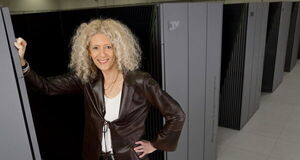
Merge Ahead: Researcher Takes Software Bridge to Quantum Computing
"Kristel Michielsen was into quantum computing before quantum computing was cool. The computational physicist simulated quantum computers as part of her Ph.D. work in the Netherlands in the early 1990s. Today, she manages one of Europe’s largest facilities for quantum computing, the Jülich Unified Infrastructure for Quantum Computing (JUNIQ) . Her mission is to help developers pioneer this new realm with tools like NVIDIA Quantum Optimized Device Architecture (QODA). We can’t go on with today’s classical computers alone because they consume so much energy, and they can’t solve some problems,” said Michielsen, who leads the quantum program at the Jülich Supercomputing Center near Cologne. “But paired with quantum computers that won’t consume as much energy, I believe there may be the potential to solve some of our most complex problems.” Enter the QPU Because quantum processors, or QPUs, harness the properties of quantum mechanics, they’re ideally suited to simulating processes at the atomic level." [...]
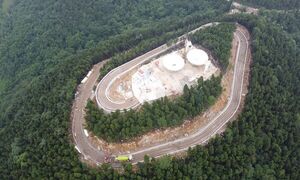
China begins construction on world’s most far-reaching radar system, to boost defense against near-Earth asteroid impact
"In a move to play increasingly role in global efforts to safeguard Planet Earth, China has recently begun constructing a new high-definition deep-space active observation facility in the country's Southwest Chongqing municipality, with goals including boosting its defense capability against near-Earth asteroid as well as sensing capability for the Earth-Moon system. The new observation facility, codenamed China Fuyan [facetted eye], will be consisted of distributed radars with more than 20 antennas, and each antenna will have a diameter of 25 to 30 meters. Working together, they are expected to carry out high-definition observation of asteroids within 150 million kilometers, the Global Times learned from the project lead, the Beijing Institute of Technology. The Beijing Institute of Technology Chongqing innovation center, China's National Astronomical Observatories under the China Academy of Sciences, Tsinghua University and Peking University will also join the Fuyan construction process, which will become the world's most far-reaching radar system. Long Teng, President of the Beijing Institute of Technology, who is also a member of the Chinese Academy of Engineering, said in a statement the university provided to the Global Times that as the system comprises multiple antennas, just like the facetted eyes of the insect, we give it a vivid name, China Fuyan. Long said that the construction will fill in blank space and meet the country's requirements including near-Earth defense and space sensing capability, as well as frontier studies on Earth habitability and the formation of asteroids." [...]
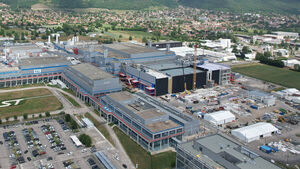
STMicroelectronics and GlobalFoundries to advance FD-SOI ecosystem with new 300mm manufacturing facility in France
"STMicroelectronics (NYSE: STM), a global semiconductor leader serving customers across the spectrum of electronics applications, and GlobalFoundries Inc. (Nasdaq: GFS), a global leader in feature-rich semiconductor manufacturing, today announced they have signed a Memorandum of Understanding to create a new, jointly-operated 300mm semiconductor manufacturing facility adjacent to ST’s existing 300mm facility in Crolles, France. This facility is targeted to ramp at full capacity by 2026, with up to 620,000 300mm wafer per year production at full build-out (~42% ST and ~58% GF). ST and GF are committed to building capacity for their European and global customer base. This new facility will support several technologies, in particular FD-SOI-based technologies, and will cover multiple variants. This includes GF’s market leading FDX technology and ST’s comprehensive technology roadmap down to 18nm, which are expected to remain in high demand for Automotive, IoT, and Mobile applications for the next few decades. FD-SOI technology has origins in the Grenoble (France) area." [...]
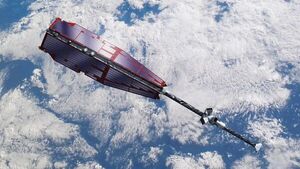
Swarm dodges collision during climb to escape Sun’s wrath
"The pressure is on at ESA’s mission control. An ESA satellite dodges out of the way of a mystery piece of space junk spotted just hours before a potential collision. Now a crucial step in the spacecraft’s ongoing journey to safer skies has to be quickly rescheduled, as violent solar activity related to the ramping up of the solar cycle warps Earth’s atmosphere and threatens to drag it down out of orbit... In-depth A swarm? Of bugs? Not quite – Swarm is ESA’s mission to unravel the mysteries of Earth’s magnetic field. It’s made up of three satellites, A, B and C – affectionately known as Alpha, Bravo and Charlie." [...]

CERN tech in space: the first CERN-driven satellite has been successfully launched
"With the launch of the CELESTA satellite for radiation monitoring in space, CERN shows its expertise in the field of radiation effects on electronics CELESTA, the first CERN-driven satellite, successfully entered orbit during the maiden flight of Europe’s Vega-C launch vehicle. Launched by the European Space Agency from the French Guiana Space Centre (CSG) at 13.13 UTC on 13 July 2022, the satellite deployed smoothly and transmitted its first signals in the afternoon. Weighing one kilogram and measuring 10 centimetres on each of its sides, CELESTA (CERN latchup and radmon experiment student satellite) is a 1U CubeSat designed to study the effects of cosmic radiation on electronics. The satellite carries a Space RadMon, a miniature version of a well-proven radiation monitoring device deployed in CERN’s Large Hadron Collider (LHC). CELESTA has been sent into an Earth orbit of almost 6000 kilometres. “Right in the middle of the inner Van Allen belt, CELESTA will survey an unusual orbit where radiation levels are at their highest,” explains Markus Brugger, Head of the CERN Experimental Areas group and initiator of both the CHARM and CELESTA projects in the context of the R2E (Radiation to Electronics) initiative." [...]
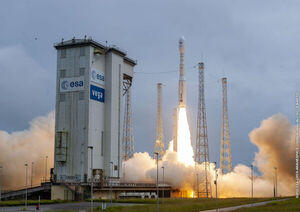
Vega-C successfully completes inaugural flight
"ESA’s new Vega-C rocket has completed its inaugural flight, placing main payload LARES-2 – a scientific mission of the Italian Space Agency ASI – into its planned orbit. Six research CubeSats from France, Italy and Slovenia flew as secondary payloads. The launch caps a multi-year effort by ESA, prime contractor Avio and industrial partners in 13 ESA member states to build on the heritage of its predecessor, Vega. Flight VV21 lifted off from Europe’s Spaceport in French Guiana at 15:13 CEST/13:13 UTC on 13 July 2022 (10:13 local time). This mission lasted about 2 hours and 15 minutes from lift-off to release of final payload and final burn of the AVUM+ upper stage engine. Total payload mass at liftoff was approximately 474kg: 296 kg for LARES-2, with the remainder being the six CubeSats, payload adapters and carrying structures." [...]

Algae biopanel windows make power, oxygen and biomass, and suck up CO2
"Beautifully designed, energy-generating bio-panels that suck up carbon dioxide and pump out biomass for use as fuel or fertilizer – that's the idea behind Mexican startup Greenfluidics and its nanotech-enhanced microalgae bioreactor building panels. The idea of using flat algae tanks on the outside of buildings as part of a sustainability exercise is not new. Indeed, back in 2013, Splitterwerk Architects and engineering company Arup teamed up to create a full-scale demonstration building, called the BIQ, featuring no less than 200 sq m (2,150 sq ft) of algae bioskin panels. These panels, tinted green by the biomass sandwiched within, serve several purposes. They take a stream of carbon dioxide, captured from what would otherwise be an emissions source, and bubble it through water impregnated with selected strains of algae, which absorb the CO2, as well as sunlight, and photosynthesize, increasing their mass and generating fresh oxygen. The more sunlight is available, the faster the algae will grow, capturing about two pounds of carbon dioxide for each pound of algae." [...]

A team in China has developed the country’s first pure solar-powered vehicle
"As several companies across the globe move closer to delivering scaled production of solar EVs, a team in China has taken sustainable transportation a step further by creating a solar vehicle that runs entirely on energy from the sun. Introducing the Tianjin solar car. Garnering range from that giant, burning ball of gas that peers down on us each day feels like a no-brainer, and that’s a similar sentiment shared by several EV startups trying to do just that. In California, Aptera’s second attempt at bringing a solar EV to market remains on track for later this year. Overseas, Lightyear recently showcased the production version of its Lightyear 0 SEV, which will also begin production later this year. In Germany, Sono Motors is approaching the validation prototype phase for its flagship Sion EV, which is aiming for production in 2023." [...]
Ciência e Tecnologia

Neutrino Factories in Deep Outer Space
"An international research team reveals for the first time the origin of neutrinos, elementary particles that reach our planet from the depths of the Universe. Highly energetic and difficult to detect, neutrinos travel billions of light years before reaching our planet. Although it is known that these elementary particles come from the depths of our Universe, their precise origin is still unknown. An international research team, led by the University of Würzburg and the University of Geneva (UNIGE), is shedding light on one aspect of this mystery: neutrinos are thought to be born in blazars, galactic nuclei fed by supermassive black holes. These results are published in the journal Astrophysical Journal Letters. The Earth’s atmosphere is continuously bombarded by cosmic rays." [...]

Tiny Motors Take a Big Step Forward
"Motors are everywhere in our day-to-day lives — from cars to washing machines. A futuristic scientific field is working on tiny motors that could power a network of nanomachines and replace some of the power sources we use in devices today. In new research published recently in ACS Nano, researchers from the Cockrell School of Engineering at The University of Texas at Austin created the first ever solid-state optical nanomotor. All previous versions of these light-driven motors reside in a solution of some sort, which held back their potential for most real-world applications. "Life started in the water and eventually moved on land," said Yuebing Zheng, an associate professor in the Walker Department of Mechanical Engineering. "We've made these micro nanomotors that have always lived in solution work on land, in a solid state."" [...]

Statistics Unlock Secrets of Particles, Pandemics, and More
"Particle hunters and disease specialists collaborate with educators and the Museum of Mathematics to teach teachers and students the value of statistics What do physicists exploring the fundamental particles that make up our universe and doctors tracking COVID-19 cases have in common? Statistics! Both sift through enormous amounts of data looking for patterns. Now members of this not-so-unlikely partnership are spreading the word about the power of statistics. In collaboration with educational specialists at the U.S. Department of Energy’s (DOE) Brookhaven National Laboratory, a team of experimental particle physicists at New York University (NYU) and a Stony Brook University pediatric infectious disease expert shared their statistical and data expertise with a team of innovative teachers. The teachers, in turn, transformed what they learned into lesson plans for middle and high school students." [...]

Artificial photosynthesis lets us grow plants in total darkness
"It opens the door to farming in previously infertile locations — such as space. Future farms might grow crops in total darkness, thanks to “artificial photosynthesis” that eliminates plants’ need for sunlight. Not only could this allow us to grow more food on Earth, it also opens the door to growing plants in previously infertile locations — such as space. The challenge Plants use photosynthesis to convert the energy in sunlight into the chemical fuel they need to grow. While this process is effective, it’s not terribly efficient — less than 6% of the energy absorbed from sunlight ends up in the plant matter. For some crops, it’s less than 1%." [...]

Generating green hydrogen from biomass, an abundant renewable energy source
"An innovative technology to produce hydrogen from biomass has been developed by a team of researchers from the Indian Institute of Science (IISc). The team was led by S Dasappa, Professor at the Centre for Sustainable Technologies, and Chair of the Interdisciplinary Centre for Energy Research at IISc. India uses nearly 50 lakh tonnes of hydrogen for various processes in different sectors, and the hydrogen market is expected to grow substantially in the coming years, says Dasappa. “But most of the hydrogen we currently use comes from fossil fuels through a process called steam methane reforming route.” Now, his team has found a way to extract green hydrogen from biomass, a renewable energy source. The process consists of two steps. In the first step, biomass is converted into syngas – a hydrogen-rich fuel gas mixture – in a novel reactor using oxygen and steam." [...]
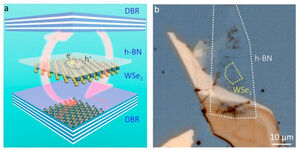
ITMO Scientists Suggest Way to Control Optical Properties of Novel 2D Materials in Low Temperatures
"We live in a world of portable blood glucose monitors, smart clothes, tiny sensors, and nanometer chips. All of that is not the limit, especially with the appearance of 2D materials based on dichalcogenides of transition metals. However, these materials are still hardly applicable in low temperatures. Read on to discover how researchers from ITMO have suggested this problem could be solved. Promises of 2D materials According to Moore’s law, the number of transistors that can fit into a processor doubles every year – and, excluding some small deviations, this has been for over fifty years. However, some researchers posit that there will be a time when this number simply won’t be able to double: by 2060, the chips would have to be the size of an atom to get any smaller, which is ruled impossible by quantum mechanics." [...]

A programming language for hardware accelerators
"Researchers created Exo for writing high-performance code on hardware accelerators. Moore’s Law needs a hug. The days of stuffing transistors on little silicon computer chips are numbered, and their life rafts — hardware accelerators — come with a price. When programming an accelerator — a process where applications offload certain tasks to system hardware especially to accelerate that task — you have to build a whole new software support. Hardware accelerators can run certain tasks orders of magnitude faster than CPUs, but they cannot be used out of the box. Software needs to efficiently use accelerators’ instructions to make it compatible with the entire application system." [...]
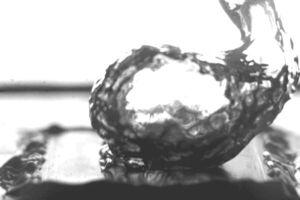
MIT engineers design surfaces that make water boil more efficiently
"Systems used in many industries could save energy through these new surface treatments. The boiling of water or other fluids is an energy-intensive step at the heart of a wide range of industrial processes, including most electricity generating plants, many chemical production systems, and even cooling systems for electronics. Improving the efficiency of systems that heat and evaporate water could significantly reduce their energy use. Now, researchers at MIT have found a way to do just that, with a specially tailored surface treatment for the materials used in these systems. The improved efficiency comes from a combination of three different kinds of surface modifications, at different size scales. The new findings are described in the journal Advanced Materials in a paper by recent MIT graduate Youngsup Song PhD ’21, Ford Professor of Engineering Evelyn Wang, and four others at MIT." [...]

Strain-sensing smart skin ready to deploy
"Nanotube-embedded coating detects threats from wear and tear in large structures A strain-sensing smart skin developed at Rice University that uses very small structures, carbon nanotubes, to monitor and detect damage in large structures is ready for prime time. The “strain paint” first revealed by Rice in 2012 uses the fluorescent properties of nanotubes to show when a surface has been deformed by stress. Now developed as part of a non-contact optical monitoring system known as S4, the multilayered coating can be applied to large surfaces — bridges, buildings, ships and airplanes, for starters — where high strain poses an invisible threat. The project led by Rice chemist Bruce Weisman, structural engineer Satish Nagarajaiah and lead author and graduate student Wei Meng springs from the 2002 discovery by Weisman that semiconducting carbon nanotubes fluoresce at near-infrared wavelengths. He subsequently developed optical instruments to explore the physical and chemical properties of nanotubes, including spectroscopic strain effects in 2008. Independently in 2004, Nagarajaiah proposed and developed a non-contact optical strain sensor using carbon nanotube films bonded to structural members with epoxy and probed with Raman spectroscopy." [...]

Astronomers detect a radio “heartbeat” billions of light-years from Earth
"The clear and periodic pattern of fast radio bursts may originate from a distant neutron star. Astronomers at MIT and universities across Canada and the United States have detected a strange and persistent radio signal from a far-off galaxy that appears to be flashing with surprising regularity. The signal is classified as a fast radio burst, or FRB — an intensely strong burst of radio waves of unknown astrophysical origin, that typically lasts for a few milliseconds at most. However, this new signal persists for up to three seconds, about 1,000 times longer than the average FRB. Within this window, the team detected bursts of radio waves that repeat every 0.2 seconds in a clear periodic pattern, similar to a beating heart. The researchers have labeled the signal FRB 20191221A, and it is currently the longest-lasting FRB, with the clearest periodic pattern, detected to date." [...]

Two New Planets Found in Milky Way
"TAU team leads discovery of giant planets, similar in size to Jupiter, in remote corner of the galaxy Tel Aviv University researchers led the recent discovery of two new planets in remote solar systems within the Milky Way galaxy. They identified the giant planets, named Gaia-1b and Gaia-2b, as part of a study in collaboration with teams from the European Space Agency (ESA) and the body’s Gaia spacecraft. The development marks the first time that the Gaia spacecraft successfully detected new planets. Gaia is a star-surveying satellite on a mission to chart a 3D map of the Milky Way with unprecedented accuracy comparable to standing on Earth and identifying a 10-shekel coin (roughly the size of a U.S. nickel) on the Moon. TAU’s Prof. Shay Zucker, Head of the Porter School of the Environment and Earth Sciences, and doctoral student Aviad Panahi from the Raymond and Beverly Sackler School of Physics & Astronomy led the initiative. The findings were published in the scientific journal Astronomy & Astrophysics." [...]

A new spin on nuclear magnetic moments
"New results from researchers at MIT reveal an unexpected feature of atomic nuclei when a “magic” number of neutrons is reached. A curious thing happened when MIT researchers Adam Vernon and Ronald Garcia Ruiz, along an international team of scientists, recently performed an experiment in which a sensitive laser spectroscopy technique was used to measure how the nuclear electromagnetic properties of indium isotopes evolve when an extreme number of neutrons are added to the nucleus. These nuclei do not exist in nature, and once created, their lifetimes can be as short as a fraction of a second, so the team artificially created the nuclei using a particle accelerator at the CERN research facility in Switzerland. By using a combination of multiple lasers and an ion trap, the team isolated the isotopes of interest and performed precision measurements of atoms containing these exotic nuclei. In turn, it allowed the extraction of their nuclear properties. Vernon, a postdoc in the Laboratory for Nuclear Science (LNS); Ruiz, an assistant professor of physics and LNS affiliate; and their colleagues achieved a surprising result." [...]

Knots in the resonator: elegant math in humble physics
"At the heart of every resonator — be it a cello, a gravitational wave detector, or the antenna in your cell phone — there is a beautiful bit of mathematics that has been heretofore unacknowledged. Yale physicists Jack Harris and Nicholas Read know this because they started finding knots in their data. In a new study in the journal Nature, Harris, Read, and their co-authors describe a previously unknown characteristic of resonators. A resonator is any object that vibrates only at a specific set of frequencies. They are ubiquitous in sensors, electronics, musical instruments, and other devices, where they are used to produce, amplify, or detect vibrations at specific frequencies. The new characteristic the Yale team found results from equations that any high school algebra student would recognize, but which physicists had not appreciated as a basic principle of resonators." [...]

Researchers Develop Practical Fiber-Integrated Quantum Memory Device
"New solid-state device represents important step toward quantum networks; holds quantum state for up to 28 microseconds Researchers have developed a practical integrated quantum memory device based on a new fiber-coupled waveguide written into a rare-earth doped crystal. Quantum memory stores a quantum state for later retrieval much like computer memory stores binary information. The fiber-integrated solid-state platform can hold a quantum state up to three orders of magnitude longer than previously demonstrated in integrated memories. Jelena V. Rakonjac from ICFO-Institut de Ciencies Fotoniques in Spain presented the new findings at the Optica’s Quantum 2.0 2022 conference 13 – 16 June 2022. Register and view the recorded presentation: Quantum 2.0. “A quantum memory is a device which can store a quantum state, typically carried using photons." [...]

Physicists harness quantum “time reversal” to measure vibrating atoms
"A new technique could improve the precision of atomic clocks and of quantum sensors for detecting dark matter or gravitational waves. The quantum vibrations in atoms hold a miniature world of information. If scientists can accurately measure these atomic oscillations, and how they evolve over time, they can hone the precision of atomic clocks as well as quantum sensors, which are systems of atoms whose fluctuations can indicate the presence of dark matter, a passing gravitational wave, or even new, unexpected phenomena. A major hurdle in the path toward better quantum measurements is noise from the classical world, which can easily overwhelm subtle atomic vibrations, making any changes to those vibrations devilishly hard to detect. Now, MIT physicists have shown they can significantly amplify quantum changes in atomic vibrations, by putting the particles through two key processes: quantum entanglement and time reversal. Before you start shopping for DeLoreans, no, they haven’t found a way to reverse time itself." [...]
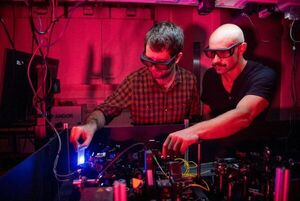
Researchers use quantum-inspired approach to increase lidar resolution
"By capturing more details, new approach could make lidar useful for facial recognition Researchers have shown that a quantum-inspired technique can be used to perform lidar imaging with a much higher depth resolution than is possible with conventional approaches. Lidar, which uses laser pulses to acquire 3D information about a scene or object, is usually best suited for imaging large objects such as topographical features or built structures due to its limited depth resolution. “Although lidar can be used to image the overall shape of a person, it typically doesn’t capture finer details such as facial features,” said research team leader Ashley Lyons from the University of Glasgow in the United Kingdom. “By adding extra depth resolution, our approach could capture enough detail to not only see facial features but even someone’s fingerprints.” In the Optica Publishing Group journal Optics Express, Lyons and first author Robbie Murray describe the new technique, which they call imaging two-photon interference lidar. They show that it can distinguish reflective surfaces less than 2 millimeters apart and create high-resolution 3D images with micron-scale resolution. “This work could lead to much higher resolution 3D imaging than is possible now, which could be useful for facial recognition and tracking applications that involve small features,” said Lyons." [...]

Microparticles could be used to deliver “self-boosting” vaccines
"With particles that release their payloads at different times, one injection could provide multiple vaccine doses. Most vaccines, from measles to Covid-19, require a series of multiple shots before the recipient is considered fully vaccinated. To make that easier to achieve, MIT researchers have developed microparticles that can be tuned to deliver their payload at different time points, which could be used to create “self-boosting” vaccines. In a new study, the researchers describe how these particles degrade over time, and how they can be tuned to release their contents at different time points. The study also offers insights into how the contents can be protected from losing their stability as they wait to be released. Using these particles, which resemble tiny coffee cups sealed with a lid, researchers could design vaccines that would need to be given just once, and would then “self-boost” at a specified point in the future." [...]
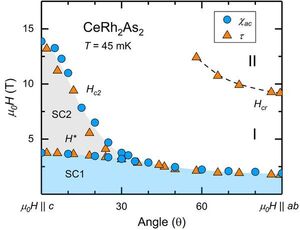
A proof of odd-parity superconductivity
"Observations reveal the angle dependence of the magnetic field needed to suppress superconductivity in CeRh2As2. Uniquely, the behavior of “odd parity” superconductors is revealed. Superconductivity is a fascinating state of matter in which an electrical current can flow without any resistance. Usually, it can exist in two forms. One is destroyed easily with a magnetic field and has “even parity”, i.e. it has a point symmetric wave function with respect to an inversion point, and one which is stable in magnetic fields applied in certain directions and has “odd parity”, i.e." [...]

3D Printing Nickel Single Crystals Using Laser Additive Manufacturing Technology
"NIMS and Osaka University Graduate School of Engineering have succeeded in fabricating a nickel single crystal with only a very few crystalline defects by irradiating nickel powder with a large-radius, flat-top laser beam (i.e., a laser beam whose intensity is uniform across a cross-section of the beam). This technique may be used to fabricate a wide variety of single-crystalline materials, including heat-resistant materials for jet engines and gas turbines. Previous studies have reported that single crystals can be fabricated using electron beam additive manufacturing. However, this technique requires expensive equipment and its operation is also costly due to the need to create a vacuum, limiting its widespread use. Although laser additive manufacturing can be performed using cheaper equipment, previous efforts to fabricate single crystals using this technique had failed. When a raw metal powder material is irradiated with a laser beam, it melts, forming a solid-liquid interface." [...]

Space rocket junk could have deadly consequences unless governments act
"The re-entry of abandoned stages of rockets left in orbit from space launches have a six to 10 per cent chance of severely injuring or killing a human being in the next decade, according to a new UBC study. Researchers say governments need to take collective action and mandate that rocket stages are guided safely back to Earth after their use, which could increase the cost of a launch, but potentially save lives. “Is it permissible to regard the loss of human life as just a cost of doing business, or is it something that we should seek to protect when we can? And that’s the crucial point here: we can protect against this risk,” says lead author Dr. Michael Byers, professor in UBC’s department of political science. When objects such as satellites are launched into space, they use rockets, parts of which are often left in orbit. If these leftover rocket stages have a low enough orbit, they can re-enter the atmosphere in an uncontrolled way." [...]
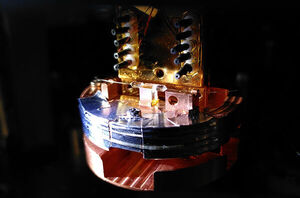
A boost in performances in fibre-integrated quantum memories
"Researchers from ICFO, IFN-CNR and Heriot-Watt University report in Science Advances the demonstration of entanglement between a fibre-integrated quantum memory and a telecommunications-wavelength photon Quantum memories are one of the building blocks of the future quantum internet. Without them, it would be rather impossible to transmit quantum information over long distances and expand into a real quantum network. These memories have the mission of receiving the quantum information encoded in a photon in the form of qubits, store it and then retrieve it. Quantum memories can be realized in different material systems, for example ensembles of cold atoms or doped crystals. In order to be useful memories, they need to fulfil several requirements, such as the efficiency, duration, and multiplexing of their storage capability, to ensure the quality of the quantum communication that they will support. One other requirement that has become a matter of considerable research is designing quantum memories that can be directly integrated in the fibre-optic network." [...]
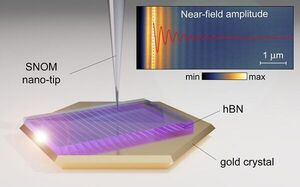
Atomically-Smooth Gold Crystals Help to Compress Light for Nanophotonic Applications
"Highly compressed mid-infrared optical waves in a thin dielectric crystal on monocrystalline gold substrate investigated for the first time using a high-resolution scattering-type scanning near-field optical microscope. KAIST researchers and their collaborators at home and abroad have successfully demonstrated a new platform for guiding the compressed light waves in very thin van der Waals crystals. Their method to guide the mid-infrared light with minimal loss will provide a breakthrough for the practical applications of ultra-thin dielectric crystals in next-generation optoelectronic devices based on strong light-matter interactions at the nanoscale. Phonon-polaritons are collective oscillations of ions in polar dielectrics coupled to electromagnetic waves of light, whose electromagnetic field is much more compressed compared to the light wavelength. Recently, it was demonstrated that the phonon-polaritons in thin van der Waals crystals can be compressed even further when the material is placed on top of a highly conductive metal. In such a configuration, charges in the polaritonic crystal are “reflected” in the metal, and their coupling with light results in a new type of polariton waves called the image phonon-polaritons." [...]
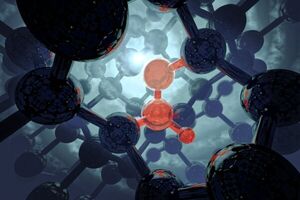
SFU researchers find the missing photonic link to enable an all-silicon quantum internet
"Researchers at Simon Fraser University have made a crucial breakthrough in the development of quantum technology. Their research, published in Nature today, describes their observations of silicon ‘T centre’ photon-spin qubits, an important milestone that unlocks immediate opportunities to construct massively scalable quantum computers and the quantum internet that will connect them. Quantum computing has enormous potential to provide computing power well beyond the capabilities of today’s supercomputers, which could enable advances in many other fields, including chemistry, materials science, medicine and cybersecurity. In order to make this a reality, it is necessary to produce both stable, long-lived qubits that provide processing power, as well as the communications technology that enables these qubits to link together at scale. Past research has indicated that silicon can produce some of the most stable and long-lived qubits in the industry. Now the research published by Daniel Higginbottom, Alex Kurkjian, and co-authors provides proof of principle that T centres, a specific luminescent defect in silicon, can provide a ‘photonic link’ between qubits." [...]
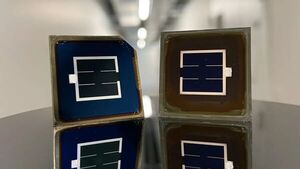
EPFL And CSEM Smash Through The 30% Efficiency Barrier For Perovskite-On-Silicon-Tandem Solar Cells—Setting Two Certified World Records
"For the first time, an efficiency of 30% for perovskite-on-silicon-tandem solar cells has been exceeded thanks to a joint effort led by scientists at EPFL’s Photovoltaics and Thin Film Electronics Laboratory in partnership with the renowned innovation center, CSEM. Independently certified by the National Renewable Energy Laboratory (NREL) in the United States, these results are a boost to high-efficiency photovoltaics (PV) and pave the way toward even more competitive solar electricity generation. Increasing the power conversion efficiency of solar cells is important for two reasons. In the long run, it is the most effective way to reduce the levelized cost of electricity. In the short term, it is the best way to promote photovoltaics for applications where space is limited e.g., roofs, facades, vehicles, or even drones. However, all solar cells are fundamentally limited by the materials they are made from, which in turn affects the efficiencies they can achieve." [...]

USS Essex First Ship to Participate in NPS 3D Printer Research
"Naval Postgraduate School (NPS) partnered with Commander, Naval Surface Force, U.S. Pacific Fleet (COMNAVSURFPAC) in facilitating the installation of a 3D printer on Wasp-class amphibious assault ship USS Essex (LHD 2) during Rim of the Pacific (RIMPAC) 2022. Essex is the first ship to participate in the initial testing and evaluation of the 3D printer during underway conditions to determine the printer’s viability when out to sea. As a proponent of enhancing overall readiness of any warfighting organization, Lt. Cmdr. Nicolas Batista, the Aircraft Intermediate Maintenance Department (AIMD) officer aboard Essex, said “Having this printer aboard will essentially accelerate, enhance and increase our warfighting readiness.” Batista stated this 3D printer, is one of the fastest printers on the market, capable of fabricating and printing aluminum up to 10” by 10”. Many common components may be created on the ship to include heat sinks, housings, fuel adapters, bleed air valves, valve covers and more. “The capabilities of the 3D printer will enable Essex to become more self-sufficient,” said Batista." [...]
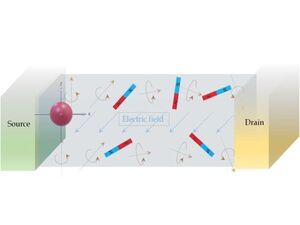
Rensselaer Researchers Learn to Control Electron Spin at Room Temperature To Make Devices More Efficient and Faster
"As our devices become smaller, faster, more energy efficient, and capable of holding larger amounts of data, spintronics may continue that trajectory. Whereas electronics is based on the flow of electrons, spintronics is based on the spin of electrons. An electron has a spin degree of freedom, meaning that it not only holds a charge but also acts like a little magnet. In spintronics, a key task is to use an electric field to control electron spin and rotate the north pole of the magnet in any given direction. The spintronic field effect transistor harnesses the so-called Rashba or Dresselhaus spin-orbit coupling effect, which suggests that one can control electron spin by electric field. Although the method holds promise for efficient and high-speed computing, certain challenges must be overcome before the technology reaches its true, miniature but powerful, and eco-friendly, potential." [...]
Projetos Maker
Diversos Projetos interessantes.
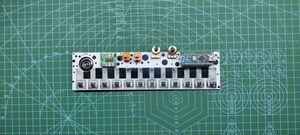
Arduino Synth V3
"A simple Arduino-based synth that can generate all sorts of exciting sounds. It has 12 push switches along with two ON/OFF switches for changing modes and two potentiometers that change pitch and tempo. By changing the Pitch Potentiometer, we can change the output waveform that makes cool sci-fi sounds by pressing any 12 buttons. It works pretty much like a normal keyboard synth. I've been making synths for a while now, made two synths that work identically to this one but they all use Mozi Library to run but this one uses simple code that modulates output by the state of buttons and switches. Material Required Following were the things I used in this build- - Custom PCB - Arduino Nano - Potentiometer - ON-OFF SWITCH - Push Buttons - Speaker 4 Ohms - Header Pins Female" [...]
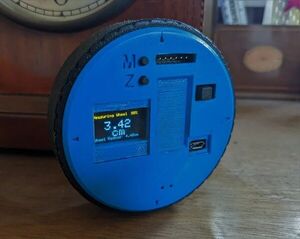
Digital Measuring Wheel
"In this Instructable I'll show you how to make my digital measuring wheel (DMW). The DMW is like a traditional measuring tape, but instead using a tape, it uses a wheel that records the distance traveled as it rotates. The wheel runs around the outer body of the DMW, so to measure something you simply press and roll the DMW across your object. This is great because it lets you measure in ways that would be tricky or impossible with a normal measuring tape. You can easily measure along curves, around corners, etc. Likewise, since you don't have to deal with a physical tape, you aren't really limited by length." [...]
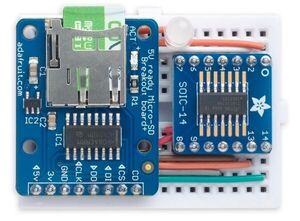
I2C SD-Card Module
"This is an SD-card module that allows you to write to and read from files on an SD card using a two-wire I2C interface. It's based on an ATtiny1614 and a few other components, and it's compact enough to fit on a mini-breadboard. Introduction I've frequently had a project where I wanted to write data to an SD card, or read from an SD card, but didn't have enough I/O lines available to wire up the SPI SD card interface, or else the SPI lines were already in use, or else the processor I was using didn't have enough RAM to run the SD library. The ideal solution seemed to be an SD module with an I2C interface, but despite much searching on the web I couldn't find one, so I decided to build one myself. I initially thought of basing the circuit on the ATtiny841, like my earlier I2C GPS Module, but I underestimated the amount of RAM needed by the SD library, and the ATtiny814 only provides 512 bytes. I therefore switched to the 1‑series ATtiny1614 which provides 2 Kbytes." [...]
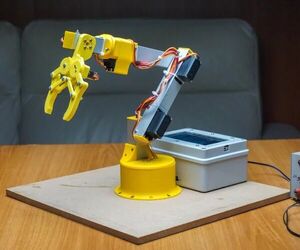
Arduino Robotic Arm Controlled by Touch Interface
"Hello. Today I'm here to see with you how I built a robotic arm with Arduino and a graphic touch interface. I want to say that for me this is not a simple mixture of various components that build a finished object together but it is something much more, a real project that started from an idea born from my passion months ago and ends today with the publication of this article. Thanks to the graphic interface it is possible not only to move the various joints in all possible directions but also to program the movements to be performed repeatedly But now, get comfortable and let's see what we need to make it! Supplies - Square aluminum tube (25mm * 25mm * 1,5mm) - A fairly powerful power supply (2.5A * 5 motors (but you won't be using them all at the same time) - Any Arduino board (I used Arduino UNO) - HC05 Bluetooth module - One SG90 Servo Motor (I got the one with metal gears) - 5x MG996R Servomotors (more powerful than SG90) - Wooden platform (for stability) - Junction box (for electrical connections)" [...]

Intravenous Flow Controller & Monitor
"Develop a device which detects the level of fluid in the electrolyte bottle and capable of sending notification to the nurse station. Story In hospitals, ICU, CCU, NICU, OT, most of the departments have patients connected to an electrolyte bottle. An assist is responsible for monitoring of the bottle. But unfortunately, due to their busy schedule, the observer may forget to change the bottle at the correct time. If the bottle is not changed, there is a fatal risk of air bubbles entering the patient’s bloodstream, which even causes immediate death. Main aim is to develop a device which detects the level of fluid in the electrolyte bottle and capable of sending notification to the nurse station and to control the flow of the electrolyte solution from the nurse station by using a common console." [...]

How to get started with TensorFlow Lite for Microcontrollers
"Want to build your own TinyML application? This is a detailed approach to getting started with TensorFlow Lite for Microcontrollers! In the summer of 2022 I was selected to participate in the Google Summer of Code (GSoC) under TensorFlow. While trying to build my first project, I quickly realized that there weren't many good beginner practical guides for using TensorFlow Lite for Microcontrollers. For this blog I hope to somewhat remedy that by introducing TFLite for Micro and how you can get started on your journey with the tool. As I plan to improve this blog or create more content in the future, please leave your feedback in the comments!" [...]

Build a Variable Lab Bench Power Supply
"Working on electronic projects at the workbench, whether prototyping with a circuit, powering a small desktop device, or simply testing a component, all require a specified source of power. Using power adapters and other DC sources such as batteries won't always be enough as they're only temporary power solutions. This is where the variable Lab Bench Power Supply unit comes in being a hands-down essential apparatus to have on any maker's workbench. With this homemade variable Power Supply unit, you can set a specific voltage (0-36V) and current limit (0-5A) for that circuit you want to power. The device even has some common fixed voltage outputs at the front as well. As a cherry on the cake, you may charge up to two Lithium-Ion cells at a time with the 2-cell automatic cut-off 18650 cell charger on the side!" [...]

ICE-V Wireless
"ICE40UP5K FPGA module with wireless interface driven by ESP32-C3 Story ICE-V Wireless is an ICE40UP5K+ESP32-C3 development board, allowing Wi-Fi and Bluetooth control of the the FPGA by combining an Espressif ESP32C3HN4 SoC with a Lattice iCE40 FPGA. Additionally, several ESP32C3 GPIO pins are available for additional interfaces, such as serial, ADC, or I2C. Features: - ESP32-C3-MINI - ICE40UP5K - PMOD x3 - RGB - LiPo power / charger - USB-C - PSRAM" [...]
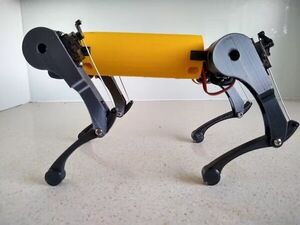
Robot Dog Boston
"A 3D printed version of Boston Dynamics robotic dog This is my redesign of Robot Dog boston by ArduinoChan and published on Thingiverse. The project uses software by Gleb Devyatkin. This code is designed for a leg that uses 3 servos. These servos are named Alpha, Beta and Gamma. The Alpha servo is for lifting the whole leg outwards. The Beta servo is the hip joint and the Gamma servo is the knee joint." [...]

Simple Arduino Bioresonance Therapy device - RIFE Machine
"This is device for treating diseases with the help of different frequencies. A set of several frequencies is given for each disease Bioresonance is a form of therapy which is based on the claim that each organism has its own resonance frequency (bioresonance), the presence of which indicates the existence of a disease. Pioneers in the development of this theory are Raymond Rife, Hulda Clark and others. According to their studies, subjecting the body to the above frequency from an external generator can cure the disease. This device for treating diseases with the help of different frequencies is also called Rife Machine, according to its inventor. A set of several frequencies is given for each disease, as well as the duration of therapy." [...]

Honey I Shrunk the Remotes!
"Hello all. A disclaimer right up front, I didn't shrink the remotes and that's not a photo of my remotes through a microscope. But what I did do was shrink them down to the buttons I use the most. Not even sure what most of the others do! However, most of you will know what this image represents. A collection of remotes that miraculously develop flat batteries all at the same time, become chew-things for pets and small children, or get swallowed by the couch and remain hidden until you have basically disassembled it." [...]

Android controlled bluetooth radio
"RDA5807 radio module with bluetooth phone app control Ok.. so i'm getting to grips with the MIT app creator and one of my desires was to create an Android phone app to control an fm radio. I used the RDA5807M connected to an ESP32 WROOM and used bluetooth to set the channel and the volume. The circuit is pretty simple. The SDA to the SDA and the SCL to the SCL. The Radio module is 3.3v and requires an amplifier. I've included the Android phone app that I made." [...]

Leave the Water Running? Build an IoT Smart Leak Detector
"Learn how to build a low-cost (and low-code) water leak detection device complete with SMS notifications if a leak's detected Story In a survey, 77% of homebuyers face unexpected repair costs in the first year of ownership, and over 2/3 of those people paid over $1, 000 for the repairs. Many of those expensive home repairs have a habit of cropping up when they're least convenient, as well. Hottest weekend of the year so far? The air conditioning goes out Friday night. Family coming into town for the holidays? The oven refuses to heat up." [...]
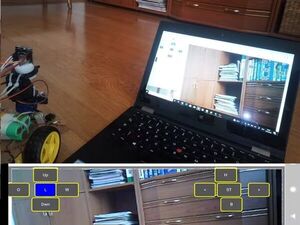
Remote control and Video Monitoring with ESP32 for Robot
"Remote control and Camera view of Robot per net or internet on your Smartphone or PC ABOUT THIS PROJECT The basic idea was to build a control module that can also enable image streaming. This should be a universal module that can easily replace already used modules. My current projects are building a remote control for car robots and RobotArm. The solution can allow swapping a Bluetooth model without having to change anything in the current software. The module was originally developed to control robots, but without any restrictions it can be used to control any other module. You’ll be able to control the robot using a web server that displays a video streaming of what the robot “sees”." [...]

Mobile Controlled Robot Arm From Scratch V1
"The development of science and technology has created new innovations. Of these inventions, the robot is the most important. Because it can imitate the movement of a particular human. Percent has different types of robots that can perform different types of tasks. A robot arm is a device that can replicate a human arm using a motor. You can move it along an axis or rotate it in a specific direction." [...]

DIY a Raspberry Game - 2048
"The game's objective is to slide numbered tiles on a grid to combine them to create a tile with the number 2048. About: Hello, the author of the project is an Application Engineer of Seeed Studio. It's great to share this project with the Hackster maker community. I hope you like Seeed Studio, a hardware enabler for IoT applications, which provides services that enable IoT developers to quickly prototype. Game 【2048】is a single-player sliding block puzzle game by Italian web developer Gabriele Cirulli. 2048 was originally written in JavaScript and CSS during a weekend, and released on March 9, 2014, as free and open-source software subject to the MIT license." [...]
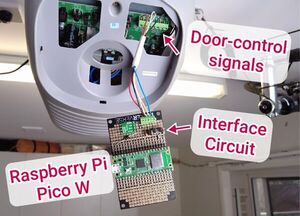
WiFi Garage Door Controller with Raspberry Pi Pico W
"I strapped a Raspberry Pi Pico W to my garage door motor and now I can control my garage door from my phone! The Pico W hosts a simple webpage on my local network with three control buttons - one for Up, Stop and Down. Pressing one of the buttons does exactly what you'd expect. This project writeup will walkthrough the control strategy, electronics, and code required to follow along. If you've never played around with smart-home, MicroPython or WiFi projects before, this project will get you started with all three! Why do this project?" [...]

USB to PlayStation Mouse
"To build the adapter, the following components are necesary: PlayStation controller cable with connector Raspberry Pi Pico Mini PFM Control DC-DC USB 0.9V-5V to 5V dc Boost Step up Power Module The cable has colored wires, but color coding is not guaranteed and has to be checked with a multimeter in continuity mode. Unused wires have to be isolated. A good way to do this is putting a thin heat shrink tube over a folded wire with isolation intact. " [...]
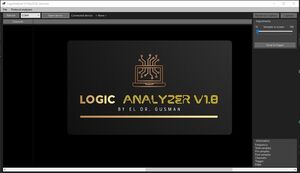
LogicAnalyzer
"Description Cheap 24 channel logic analyzer with 100Msps, 32k samples deep, edge triggers and pattern triggers. Overview LogicAnalyzer is a very cheap analyzer based in a Raspberry Pico. The analyzer offers up to 24 digital channels, pre and post trigger sampling, edge trigger and pattern trigger up to 16 bits. The most basic version is purely a Pico as-is, you only need to short GPIO0 and GPIO1, upload the firmware and you're good to go. Of course this has some limitations as the Pico only supports 3.3v, if you want to use it to diagnose 5v signals I also have designed a fast level shifter board. Additionally to the hardware the logic analyzer also includes a powerful software (Windows only for now) where you can visualize the captured data, export captures, use protocol analyzers, etc." [...]

Display VFD48-1202FN analog style
"How to control the VFD48 display with Arduino My son gave me this vfd48 display and I did not know what to do with it. I searched on the internet for solutions, but there was none with arduino. So a few months ago I decided to make the display to work. I downloaded the datasheet and made in excel an overview of all the commands to use. The datasheet says that the filamentvoltage is 2.4 VAC, but it works well with 1.5 VDC. Also the grid and anode voltages should be 30 VDC, but it works fine with 20 VDC." [...]

Adjustable Single/Dual LED Flasher Using 555 Timer IC
"In this tutorial, I'll first blink "an LED" using the positive pulse generated by a "DIY 555 Pulse Generator Module" , followed by "two LEDs" alternating and flashing at a regular interval. For this tutorial we need: 2 x LEDs 1 x 555 Timer IC 1 x 10µF Capacitor 1 x 220Ω Resistor 1 x 1kΩ Resistor 1 x 10kΩ Resistor and/or 1 x 10kΩ Potentiometer" [...]

Build your own IoT platform using node.js and ESP8266
"If you are a hardware enthusiast then you might have blinked an LED through WiFi. maybe on your local network or over the internet using third-party services like Blynk or ThingSpeak. But It either works only on your local network or You have to use some 3rd party solutions. In this article, I am going to guide you on how to build your own IoT minimal platform, that works over the internet. Our platform will have three parts, The User Interface ie. front end Server ie back end Hardware And all three parts of the application should be able to communicate with each other in real-time." [...]
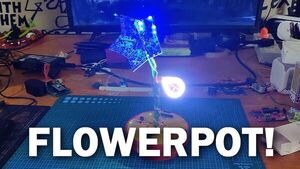
Just a Regular OverEngineered FlowerPot
"Made a Flower Pot by combining PCBs together, the whole setup is powered by an Atmega328PU, and it's basically a Decorative lamp. I made this flowerpot by combining three different PCBs, I used a diamond-shaped board as a flower petal by soldering them together in star-shaped form. I used a previously made PCB as a leaf because its shape was somewhat similar to an actual leaf. As for the stem, I prepared a PCB that holds the flower and leaf together, this stem is then soldered on a base that holds the whole structure and also contains the control board. I've added LEDs on Petals and Leaf, these LEDs connected are in parallel. LEDs on each PCB are connected in parallel, they are all driven by six MOSFETs that are on the Base PCB." [...]
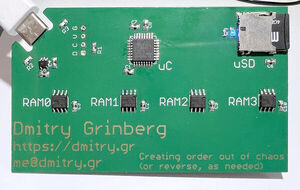
My business card runs Linux, yours can too
"Why? A long long time ago (in 2012) I ran Linux on an 8-bit AVR. It was kind of a cool record at the time. I do not think anyone has beaten it - nobody's managed to run Linux on a lower-end device than that 8-bit AVR. The main problem was that is was too slow to be practical. The effective speed was 10KHz, the boot time was 6 hours." [...]
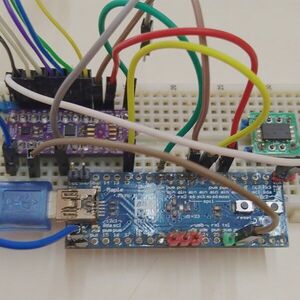
iCEBlaster
"STM32 based Drag N Drop iCE40 SPI Bitstream loader. iCEBlaster is the USB Drag and Drop Bitstream loader for iCE40 FPGA. Using STM32 as Mass storage device class glued with internal Flash memory as a USB disk (on iCEBlaster v1) or Virtual File system based on FAT12 (iCEBlaster VFS). iCEBlaster iCEBlaster is a Drag and Drop firmware loader via SPI for iCE40 FPGA. The brain of this project is based on STM32 Arm Cortex microcontroller. How it works?" [...]
Secção Videos
Videos interessantes.
That's all Folks!



